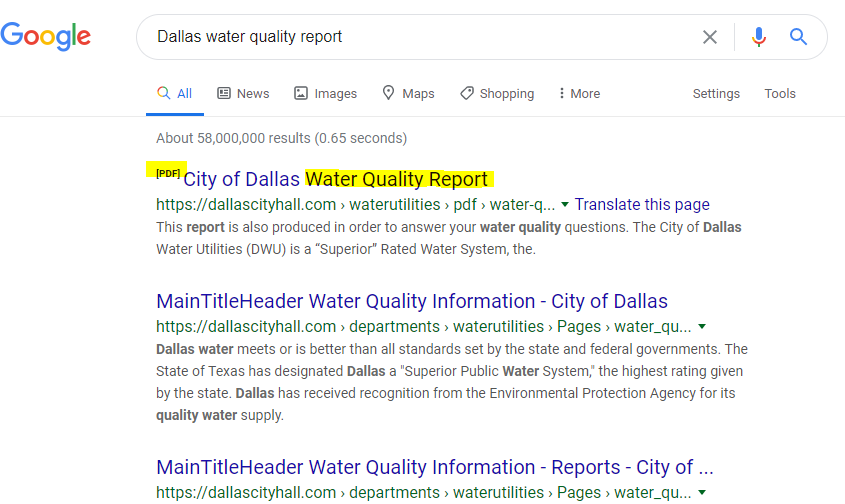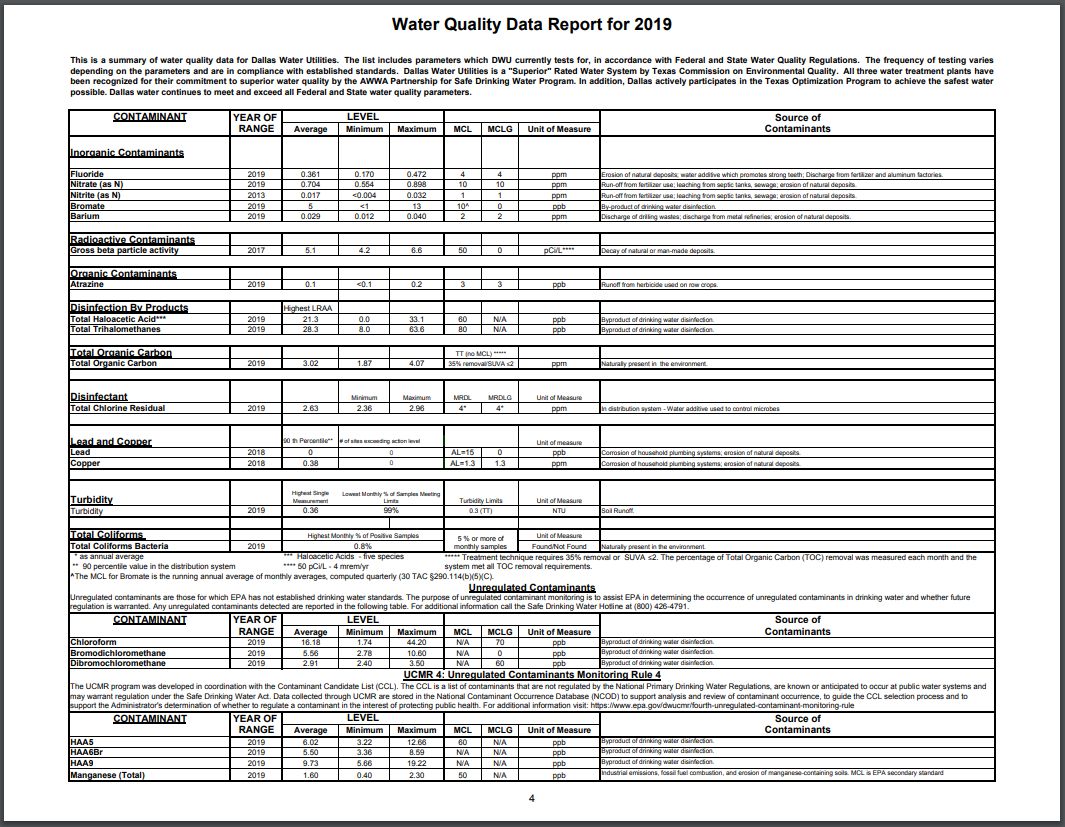Finding Your Cities Water Quality Report - Part 1
Posted by eWater Health Emporium on Mar 21st 2021
More than 85 percent of Americans’ water is delivered through public municipalities. While this may make things very convenient, it can also give people a false sense of security.
Just because our city is responsible for cleaning and safeguarding our water doesn’t always mean the water is good -- or even safe -- to consume.
It’s a monumental task for any city to provide residents with “safe” water, meaning water that’s free of viruses and harmful bacteria.
Obviously this doesn’t always happen, as towns like Flint, Mich., can attest.

For the most part, though, most cities go above and beyond to keep our water safe for use and consumption. That’s the good news.
The bad news? The way most cities keep their drinking water safe (and your monthly water bill manageable) is by dumping a ton of chemicals into the water. While this may kill those harmful viruses and bacteria, it also means that the water you drink from or the water you bathe your children in still contains chemicals.
The bottom line? It’s up to us to filter our water so that it’s healthy for our consumption.
Lack of uniform standards
Further complicating matters is the lack of uniform, national standards, as each city is responsible for its own water management -- including the types of chemicals it uses and the amount of those chemicals used to treat its water.
Each city starts out with different water. A city in the midwest will obviously have a different water source than a city in southern Louisiana. Even cities in the same areas can have different starting water sources.
This leads to very different water treatments.
Fortunately, cities are required to post water quality reports, which outline the water treatment process and shows the required chemical levels that are added to the water. However, cities are only required to show certain chemicals, not all of them (but we’ll cover that in the next post).
Consumer Confidence Report
How do you find your city's water quality report, also known as the Consumer Confidence Report?
The easiest way is to Google “(your city) annual water quality report”.

Most times, the No. 1 search result will be something like: [pdf] Year Water Quality Report (Your city). Clicking on the link will normally bring up a multi-page PDF report.

The report usually has a page or two outlining where the water comes from and water conservation efforts. A lot of these reports also talk about lead and anything that may be going on locally involving your water. Then, finally, you’ll typically find a few pages about the actual water quality test results.

The test results, though, come with little to no explanation or context, rendering them useless.
That’s done on purpose.
In the next post, we’ll discuss how to decipher the gibberish as well as an additional resource to see what is actually in your water. Remember, these reports usually show only the required chemicals. The EPA doesn’t require cities to list all of the chemicals. In this case, what you can’t see, CAN hurt you.
Let us know in the comments if you take the time to find your local municipalities’ water quality report.


